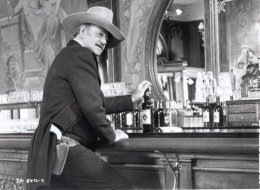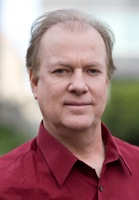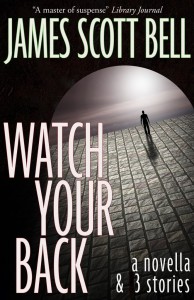Category Archives: James Scott Bell
Happy Holidays!
 It’s Winter break here at the Kill Zone. During our 2-week hiatus, we’ll be spending time with our families and friends, and celebrating all the traditions that make this time of year so wonderful. We sincerely thank you for visiting our blog and commenting on our rants and raves. We wish you a truly blessed Holiday Season and a prosperous 2011. From Clare, Kathryn, Joe M., Nancy, Michelle, Jordan, John G., Joe H., John M., and James to all our friends and visitors, Seasons Greeting from the Kill Zone.
It’s Winter break here at the Kill Zone. During our 2-week hiatus, we’ll be spending time with our families and friends, and celebrating all the traditions that make this time of year so wonderful. We sincerely thank you for visiting our blog and commenting on our rants and raves. We wish you a truly blessed Holiday Season and a prosperous 2011. From Clare, Kathryn, Joe M., Nancy, Michelle, Jordan, John G., Joe H., John M., and James to all our friends and visitors, Seasons Greeting from the Kill Zone.
See you back here on Monday, January 3.
Strategies for surviving the epublishing revolution
One of the perks of being Program Chair of MWA, SoCal is that I get to do outreach to interesting, dynamic people. On Saturday we had a very cool panel at our chapter meeting, including Marci Baun, publisher of Wild Child Publishing, and our own Jim Bell. Author Gary Phillips moderated the program, which was called, “Epublishing: Will it help your career, or kill it?”
Gary opened the discussion by citing some statistics: Today, epublishing is still a relatively small slice of the publishing world, but it’s growing exponentially. Baun, whose company is an innovator in the epublishing market, started off by setting aside the “myth” that publishers see huge savings by publishing e-books instead of paper. (Gary has since alerted us to a NYT article on the same topic, Math of Publishing Meets the E-book.) Jim also fielded some questions about TKZ’s new e-book anthology, Fresh Kills.
The panelists stressed that to be successful in any kind of publishing, especially epublishing, it’s important to do social networking. Blogging, Facebook, Twitter: You have to get your name out there and work your networks. At one point they asked for a show of hands from the people who are active social networkers; many hands went up, but not a majority. I was surprised by that–I would have assumed that almost everyone in that group would be active online. Around the lunch table, I heard some people say that they find social networking to be confusing and intimidating.
A small but consistent networking effort can be very effective according to Baun, who said she requires an author to make a successful online marketing effort before she’ll launch a print run for their book.
The panel discussed the do’s and don’ts of social networking, including the importance of adding value to the discussion, and avoiding endless BSP. Among the strategies discussed were What to Tweet, and using ebooks as a loss leader. After the meeting I followed Jim’s suggestion to use Tweetdeck, and to get more actively involved in forum discussions.
Other than doing my weekly blog posts, I’ve been hit or miss in my social networking efforts up until now. As a result of Saturday’s meeting I’ve resolved to spend at least 15 minutes a day making the networking rounds.
What about you? How much time do you spend social networking every day, and are you consistent?
Short Stories Matter
As you know, we’ve been celebrating the release of Fresh Kills here on TKZ. It’s been a pleasure working with my blogmates, pros all, to bring you these new stories, at an attractive price. Look for Fresh Kills at amazon, scribd or smashwords.
My contribution to the anthology is “Laughing Matters,” a title that has more than one meaning, as you’ll find out. And that’s sort of what the best short stories do; they work on at least a couple of levels.
Certainly, the literary short story is like that. In college I got to take a writing workshop with Raymond Carver, and that’s what his stories are famous for. They have something going on up top, on the surface, but when you finish you realize there’s a rich layer underneath that you’ve missed (and I have to confess, I usually did, and would have to re-read each one a couple of times).
In the suspense or mystery category, you need to deliver a story that has a surprise in it somewhere, to keep the reader guessing. Jeffery Deaver has written two volumes of such tales in his Twisted series, and even challenges the reader to try to outguess him. It’s cool when it works, but it’s hard to do. Which is why this kind of story is every bit as challenging as the literary sort.
The germ of “Laughing Matters” came one day when I was thinking about all the standup comics in LA who never make it. I must have just seen some clip of a comedian doing post-Seinfeld observational humor (one of thousands) and just thought, this is dull. This is derivative. This guy’s not going to go very far.
Which reminded me of a time when I was living and acting in New York, and went to a comedy club for “open mike.” There were some funny guys, and then there was this one kid who was obviously onstage for the first time. The sort whose grandmother must have told him, “Sonny, you are so funny! You should go tell your jokes on television!”
Anyway, the kid comes out, he’s nervous, and tells a joke. It fell to the ground with a thud that echoed through the club. He got rattled. And you know what happens when you get rattled in front of the 11 p.m. crowd in New York City on open mike night? It was brutal. The kid made it through maybe two more jokes, neither of which worked, and then froze. As the crowd piled on with jeers and snorts, he stood there, choking the mike stand, unable to move or speak.
The emcee, noting what was going on, jumped in from the wings with his big smile, clapping his hands, shouting “Let’s hear it for _____ !” and then took the guy’s arm and guided him off the stage.
There must have been public hangings easier to watch.
So all of that came to me as I wrote the opening lines:
He died.
Pete Harvey, “The Harv” as he billed himself, just flat out died in front of the 11 p.m. crowd at the Comedy Zone.
Then I have Pete sitting at the bar afterward, drowning his sorrows, when a most interesting gent sits down next to him. And the story came to me in a flash, twists and all. This is, I’d wager, how the best short stories usually appear. But then you write, re-write and polish, and hopefully come up with something that works.
I’ve reclaimed my love of the short story, and have decided to keep writing them. Maybe I’ll put out my own collection sometime. It’s nice to have a market for stories again. Because short stories matter, it seems to me. A good story can deliver a hugely satisfying reading experience in small span of time.
FWIW, here are some of my favorite short stories, based on the wallop I felt at the end:
“Hills Like White Elephants,” Ernest Hemingway
“Soldier’s Home,” Ernest Hemingway
“The Daring Young Man on the Flying Trapeze,” William Saroyan
“A Word to Scoffers,” William Saroyan
“A Perfect Day for Bananafish,” J.D. Salinger
“The End of the Tiger,” John D. MacDonald
“Chapter and Verse,” Jeffery Deaver
Tomorrow, we return you to your regularly scheduled blog. It’s been a pleasure to offer you our wares in Fresh Kills. Thanks for taking us for a spin.
First Person Boring
I love a good First Person POV novel. I love writing FP myself. But there are perils, and if you’re thinking of trying your hand at it you’re going to need be aware of them.
One of these is the “I’m so interesting” opening that is anything but.
Recently I read a couple of novels in FP that had this problem. They began with the narrator telling us his name and giving us a chapter of backstory. By the time I finished the opening chapter I was thinking, Why am I even listening to you?
Let me illustrate. You go to a party and see a guy standing off to the side, you nod and introduce yourself, and he says, “Hi. My name is Chaddington Flesch. Most people call me Cutty, because my grandfather, Bill Flesch, refused to call me anything else. He liked Cutty Sark, you see, and thought this name would make a man out of me. All through school I had to explain why I was called Cutty. Growing up in Brooklyn, that wasn’t always easy. Even today, at my job, which happens to be as an accountant, I . . .”
Yadda yadda yadda. And you’re standing there at this party thinking, Dude, I’m sorry, but I don’t especially care about your history. I have a history, everybody at this party has a history. Nice meeting you, but . . .
But what if you introduce yourself to the guy and he says, “Did you avoid the cops outside?”
You look confused.
“Because I got stopped by a cop right out there on the street. He tells me to hit the sidewalk, face down, and then proceeds to kick me in the ribs. I say, ‘There’s been a mistake.’ He gets down in my face and says, ‘You’re the mistake. I’m the correction.'”
What are you thinking then? Either: Am I talking to a criminal? Or, What happened to this poor guy?
What your reaction isn’t is bored.
You are hooked on what happened to him. And that’s the key to opening with FP. Open with the narrator describing action and not dumping a pile of backstory.
Save that stuff for later.
Open with movement, with action.
I got off the plane at Maguire, and sent a telegram to my dad from the terminal before they loaded us into buses. Two days later, the Air Force made me a civilian, and I walked toward the gate in my own clothes, a suitcase in each hand.
I was a mess.
[361 by Donald Westlake]
The girl’s name was Jean Dahl. That was all the information Miss Dennison had been able to pry out of her. Miss Dennison had finally come back to my office and advised me to talk to her. “She’s very determined,” my secretary said. “I just can’t seem to get rid of her.”
Then Miss Dennison winked. It was a dry, spinsterish, somewhat evil wink.
[Blackmailer by George Axelrod]
The nun hit me in the mouth and said, “Get out of my house.”
[Try Darkness by James Scott Bell]
Now I realize I’ve used hardboiled examples here, and some of you favor more literary writing. There’s a lot of debate on just how you define “literary,” but let me suggest that literary does not have to mean leisurely. You can still open with a character in motion in a literary novel, and I guarantee you your chances of hooking an agent or editor, not to mention a reader, will go way up without any other effort at all.
One of my biggest tips to new writers is the “Chapter 2 Switcheroo.” I can’t tell you how many times I’ve looked at a manuscript and suggested that Chapter 1 be thrown out and Chapter 2 take over as the new opening. I would say, conservatively, that 90% of the time it makes all the difference, because the characters are moving. There’s action. Something is happening. And truly important backstory can be dribbled in later. Readers will always wait patiently for backstory if your frontstory is moving.
Try it and see.
The Liar’s Club
No really, you shouldn’t have. I mean, sure, it is our…
ONE YEAR ANNIVERSARY!
What do you mean, you forgot? Yes, it was just a year ago today that I wrote the inaugural post for The Kill Zone. And to celebrate a year of rants, raves, and other miscellany, my fellow bloggers and I decided to do what we do best- make stuff up. Below is a series of questions. One of the answers to each question is an outright, baldfaced lie. Your job is to guess who’s fibbing.
For each correct guess, your name will be entered in a drawing for signed editions of each of our latest releases (including my coffee table book on macrame. It’s not just about macrame, it’s MADE of macrame. Patent pending).
Because after all, what anniversary would be complete without fabulous gifts?
Note: despite the outrageous nature of some of these responses, there is only one liar per question. Hard to believe, but true. The winner will be announced in my post next Thursday.
So good luck, and thanks for making this an amazing year!
1. What’s the most “outrageous truth” about yourself, one few people would ever guess?
Kathryn: I once hid in the bushes outside Ted Kennedy’s home, spying on him for a Boston TV station.
John Gilstrap: I was featured in John Wayne’s last filmed performance.
Clare: I was runner up in the 1989 “Miss Melbourne” beauty pageant.
James: I’m a descendant of the Duke of Wellington
Michelle: I was a featured guest on the Maury Pauvich show.
2. What’s the strangest interaction you’ve ever had with a fan or reader?
James: A man approached me at a conference and said God told him I was chosen to write his story. I told him I didn’t get the memo.
Clare: During an radio interview for Consequences of Sin, the host claimed he had predicted 9/11.
Michelle: At a conference, a Ted Kaczynski look-alike handed me a manila envelope filled with xeroxed diary pages outlining ominous apocalyptic predictions.
John Gilstrap: After giving 20 minutes of advice to a young writer at a signing, he walked away saying, “Huh. Well, I don’t read shit like you write.”
John Ramsey Miller: In 1997 I had a stalker who followed me on a book tour to 5 cities out of 11. She changed her appearance each time and asked me to sign a book to whatever name she was disguised as.
Kathryn: During a radio interview for DYING TO BE THIN, one caller claimed there is a conspiracy to keep America fat. I said thank goodness for that, otherwise I’d have to blame my sweet tooth.
3. What’s the craziest/most dangerous thing you’ve ever done in the name of research?
John Gilstrap: I intentionally leaned against a prison fence and walked around the perimeter to see how long it would take for a guard to respond.
John Ramsey Miller: In the mid to late eighties I set up a formal portrait studio at a series of KKK rallies across the south and at the Annual Celebration of the Founding of the Ku Klux Klan in Pulaski Tennessee.
 Kathryn: I logged onto wild and wooly web sites that gave my computer a nasty virus.
Kathryn: I logged onto wild and wooly web sites that gave my computer a nasty virus.
Michelle: I volunteered to be tased to see what it felt like.
James: I asked Chuck Norris to show me his Total Gym workout
Clare: I navigated piranha infested waters in a dugout canoe.
4. What’s the worst line you’ve ever read in a review or rejection of your work?
John Gilstrap: An agent offered to represent NATHAN’S RUN if I would change the protagonist from a 12-year-old boy to a divorced woman.
Joe Moore: “Weak and simple plot, unbelievable and boring characters, and poor writing make this book difficult to finish.”
James: Dear Mr. Bell: Enclosed are two rejection letters; one for this book, and one for your next book.
Kathryn: Agent rejection: “I really wanted to like your story. But I just didn’t like the voice. Or the main character. I just didn’t like anything about it at all.”
Clare: “It’s painful to read more than one or two pages at a time.”
I have to say, I was impressed with my fellow bloggers’ ability to lie with aplomb. Since I could only choose one lie per question, I was forced to omit some real humdingers. Next week I’ll include outtakes/elaborations in the post.
On a side note, Clare just officially became a US citizen (and that’s the truth). Welcome and congratulations!
Serendipity
Today is July 26, a day of celebration for me. For one thing, it marks my debut on The Kill Zone, and I couldn’t be more pleased to be included with six writers I admire. I’ve learned a lot from this august company, and am proud to be added to the mix.
This date also happens to be one that changed my life forever—for it was on July 26, 1980, that I met my wife.
I was at a birthday party for a friend. It had spilled out into the courtyard of his apartment building, where I sat at a table with a couple guys, yakking. I happened to look up and saw a blond vision of loveliness heading up the stairs to the apartment. I turned to my comrades and said, “I’ll see you later.”
I got to the apartment just as she was hugging my friend. Her back was to me. I silently motioned for my friend to introduce me. And that, as they say, was that. I fell like five tons of brick and mortar. It took me all of two-and-a-half weeks to ask her to marry me. (Perhaps this explains why I favor first page action in my books). Eight months later we were wed and my life has been richly blessed ever since (in no small part due to Cindy’s sharp editorial eye; she’s always my first reader).
When I think of these events, the word serendipity comes to mind. It’s a word derived from a Persian fairy tale, The Three Princes of Serendip (an ancient name for Sri Lanka). The story tells of an eminent trio making happy discoveries in their travels, through accident and observation. The English writer Horace Walpole coined the term serendipity to describe this combination of chance and mental discernment.
Which is a long way of saying that some of the best things that happen to us in life are “happy accidents” because we’ve shown up, and are aware.
Much of the best writing we do is serendipitous, too. As Lawrence Block, the dean of American crime fiction, put it, “You look for something, find something else, and realize that what you’ve found is more suited to your needs than what you thought you were looking for.”
Doesn’t that describe some of the best moments in your writing? I once had a wife character who was supposed to move away for a time, to get out of danger. That’s what I’d outlined. But in the heat of a dialogue scene with her husband, she flat out refused to go. Turns out she was right and I was wrong, and the story was better for it.
Can we ramp up serendipity as we write? I think so. Here are a few suggestions.
Don’t just be about imposing your plans on the story to the detriment of happy surprises. Be ready to shift and move.
The way of serendipity is open to every writer, be you an outliner or a seat-of-the-pants type, or anything in between. It’s just a matter of showing up and being aware. And the more you write, the more you’ll recognize serendipitous moments when they arise.
Has serendipity played a role in your own writing? Tell us about it.
And thanks again to The Kill Zone for the invitation. A happy surprise indeed.
A Challenge from Across the Pond
Today we welcome our guest James Scott Bell to TKZ. Jim is the author of the Ty Buchanan thriller series – Try Dying, Try Darkness and Try Fear (July 09). His latest standalone, Deceived, was called a "heart-whamming read" by Publishers Weekly. He has taught novel writing at Pepperdine University in Malibu, and at numerous writers conferences. In July he’ll be conducting a workshop on suspense dialogue for the International Thriller Writers CraftFest portion of ThrillerFest in New York. Jim is also the author of two bestselling books in the Write Great Fiction series from Writers Digest Books: Plot & Structure and Revision & Self-Editing. A former trial lawyer, Jim lives and writes in L.A. His website is www.jamesscottbell.com
 Perhaps you saw the challenge a group of British thriller writers laid down last month. In The Guardian (UK) , Jeffery Archer, Martin Baker, Matt Lynn and Alan Clements declared they are out to end "the reign of the production-line American thriller writers, such as James Patterson, John Grisham and Dan Brown" and return British thrillers to their "rightful prominence."
Perhaps you saw the challenge a group of British thriller writers laid down last month. In The Guardian (UK) , Jeffery Archer, Martin Baker, Matt Lynn and Alan Clements declared they are out to end "the reign of the production-line American thriller writers, such as James Patterson, John Grisham and Dan Brown" and return British thrillers to their "rightful prominence."
Talking a little English smack, Archer said, "The tradition of thriller writing should never be allowed to die. Not least because we are better at it than anyone else in the world."
My thought upon reading that was, We whipped ’em in 1781, and we can do it again.
But I set my musket aside and continued reading. Here’s a clip:
Lynn, author of the military thriller Death Force, said that authors such as James Patterson – who writes, with the aid of a team of co-authors, up to eight books a year – have "drained a lot of the life out of the market". "Look at Fleming, look at Len Deighton – they had a quirkiness to them. Yes they were very popular, and had elements of the formulaic, but there was an edge of originality to them," he said. "All the writers in this group believe in bringing that back … Too many of the American thrillers are just being churned out to a rigid formula. Good writing is never a production line."
"We’re trying to say ‘why would you want to read fairly cynical, ghost-written books which are being pumped out by publishers when there are a lot of good new British writers you could be reading?’" explained Lynn. "We feel the genre has been quite neglected in the last seven to eight years … There haven’t been any new writers coming through. It might be because there aren’t any very good writers, or maybe it’s because publishers and booksellers have been neglecting it – they’ve become obsessed with the big names, and because they’ve got a new James Patterson or John Grisham four to five times a year to put at the front of the bookshop, it crowds out all the new British authors who are coming through."
These writers, who call themselves The Curzon Group, have come up with "five principles" for writing a thriller. They believe–
1. That the first duty of any book is to entertain.
2. That a book should reflect the world around it.
3. That thrilling, popular fiction doesn’t follow formulas.
4. That every story should be an adventure for both the writer and the reader.
5. That stylish, witty, and insightful writing can be combined with edge-of-the seat excitement.
Let’s take a closer look.
1. That the first duty of any book is to entertain.
Check. Without that, nothing else matters, because no one is reading you. And note that entertainment does not mean fluff. Being "caught up in the story" can happen in many ways and in myriad genres.
Our top thriller writers clearly entertain. Look at what’s being read on any given plane on any given day. For a read that gets you caught up in the fictive dream, we Americans are certainly holding our own, wouldn’t you say?
2. That a book should reflect the world around it.
 I’m not sure what this means. Social comment? Message? Verisimilitude? You can take it a number of ways.
I’m not sure what this means. Social comment? Message? Verisimilitude? You can take it a number of ways.
I do think a thriller has to "reflect" the world to the extent it establishes the feeling of reality, that the events in the story could happen. How well you do this is a matter of individual style, and avoiding things that could pull readers out of the story.
But this is SOP for any fiction writer, not just those who do thrillers. I’m not sure this principle moves the debate along.
What do you think it means?
3. That thrilling, popular fiction doesn’t follow formulas.
Here, I disagree a bit. There is a reason we have formulas in this world: they WORK. Try making nitroglycerin out of egg whites or lip balm out of sandpaper. We use formulas every day. We’re lost without them.
What most critics mean by this jab is "formulaic," which is a euphemism for "by the numbers" or otherwise without original content and style.
And we’d agree. Thrillers need formula, but should never be formulaic.
So what’s the formula?
For one thing, somebody has to be in danger of death. (I’ve talked elsewhere about the three types of death—physical, professional and psychological. For most thrillers, physical is on top).
Another ingredient: an opposition force that is stronger than the Lead. If not, the reader won’t care about the stakes.
And the Lead has to be a character we care about deeply. Not perfect, and not necessarily all good (think: Dirty Harry). We just have to care, and there are things you do and don’t do to forge that reader connection.
What keeps a thriller from being by-the-numbers is the freshness you bring to it by way of character, voice, style, and the arrangement of plot elements.
Take A Simple Plan by Scott Smith. A tried and true formula: innocent man finds forbidden treasure, succumbs to greed, disaster results (the death overhanging this novel is psychological death, which the Lead and his wife suffer by the end). That story’s been done over and over. But Smith brought to it compelling characters in complex relationships, and a style that drives you relentlessly from chapter to chapter.
Or the film The Fugitive. Innocent man on run from the law. Formula! But what they did with both Richard Kimble (Harrison Ford) and especially Sam Gerard (Tommy Lee Jones) turned it into a classic thriller. We’ll never forget Sam’s line, "I don’t care!" Or the beat where Kimble, trying to get out of Cook County Hospital without being recognized, puts his own troubles on hold to help a kid in the emergency ward.
When the film was over, and Sam does care, we’ve been taken on an almost perfect thrill ride.
4. That every story should be an adventure for both the writer and the reader.
Check. For the writer of thrillers, that means taking a risk in each book, somehow. Stretching the muscles. For example, I love that Harlan Coben has taken Myron Bolitar international in his latest. I’m sure you have your favorite examples, too (what are they?)
No adventure in the writer, no adventure in the reader.
5. That stylish, witty, and insightful writing can be combined with edge-of-the seat excitement.
Who is going to argue with that?
 I’d aver, however, that style cannot overcome a weak story construct. So while I’m at it, let me put in a good word for Patterson, who has been castigated by so many. His concepts are terrific. He knows story at the fundamental level. His books wouldn’t do nearly so well without the solid scaffolding of the basic premise.
I’d aver, however, that style cannot overcome a weak story construct. So while I’m at it, let me put in a good word for Patterson, who has been castigated by so many. His concepts are terrific. He knows story at the fundamental level. His books wouldn’t do nearly so well without the solid scaffolding of the basic premise.
Before I can start outlining or writing, I have to have a logline that excites me, that calls up all sorts of possibilities in my mind. That’s something Patterson, Grisham and Brown also have as the baseline of their books. And so do all successful thriller scribes, as far as I can see.
Our team, the American thriller writers, do pretty well after all. So if the Brits want to have a contest, I say: Bring it.
I’m in.
Any other takers?
And what do you think of the five principles?
~~~~~~~~~~~~~~~~~~
Coming up on our Kill Zone Guest Sundays, watch for blogs from Sandra Brown, Steve Berry, Robert Liparulo, Thomas B. Sawyer, Paul Kemprecos, Linda Fairstein, Oline Cogdill and more.





